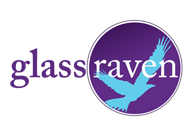When setting up your first website it can be a bit overwhelming with various terms you may never have heard before. Here we’ve defined some of the most commonly used terms to help demystify the process for you.
Website Hosting
For a website to be viewed by other people it must be stored on a computer (server) that is permanently connected to the internet. A company that provides the website hosting is known as a web host.
Tip: It is recommended to ensure that your hosting server is located in the country you are providing services
Domain Name (eg: glassraven.com)
A domain name is your address on the web – it is used to identify your website and provides an easy way to access the website files held on your hosting. There are various suffixes (known as TLDs or top level domain), the most commonly used for a UK business being .co.uk and .com
Tip: We would always recommend a UK based business to purchase both the .co.uk and .com version of their domain name, if both are not available check who is using the other version – else you risk losing business to a competitor!
URL & Filenames
A URL is often also referred to as a web address. It refers to the full address of a page within your website. For example: www.glassraven.com/articles/10tips-google-adwords.php
This is the URL for a website page about Adwords, the filename is 10tips-google-adwords.php which is held in the folder articles on the domain name glassraven.com
SEO (Search Engine Optimisation)
Search engine optimisation is the process of selecting keywords/phrases relevant to your website and ensuring your website ranks well for it on a search engine results page. It includes 2 main aspects:
Onsite SEO: Your site content (most importantly page headings and titles), structure, coding, filenames, image alt tags
Offsite SEO: Links into your website, social media, article sharing,
The most important aspect of SEO is selecting the right target keywords – there is little point in ranking well for a keyword if it is not being used by your customers. Find out more here: www.glassraven.com/web-design-resources.php
CMS (Content Management System)
A website content management system allows you to maintain your website via your web browser often without the need for any technical knowledge. They often provide you with familiar word processor style controls to format and edit your website content.
Blog
Blogs were originally used as online journals but are becoming a common marketing tool for businesses, providing them with a way to regularly write information in what are called posts. Each post has a date and can be categorised and tagged to make it easy for people viewing the blog to find information.
The most commonly used blog platforms are WordPress and Blogger (we tend to use WordPress for most of our clients blogs as it provides the most flexibility of design & customisation).
Ecommerce
An ecommerce website or shopping cart describes a website which has software that allows customers to place items into an online shopping basket and purchase over the internet.
Ecommerce software varies vastly in the functionality they provide and amount they can be customised. The basic functionality that most ecommerce software provides is the facility to update your own product catalogue.
Web Optimisation
The aim of optimisation is to reduce the amount of time taken to load a website and can help with your SEO as well as your website users experience.
Websites are optimised by ensuring they are well coded (splitting off the content from the design elements for example). Images are optimised by adjusting the quality and removing hidden data from your file, and ensuring you don’t use too many on each page!
Tip: If your website does not automatically optimise your images for you then I highly recommend you try Photoshop Elements – an excellent piece of software
